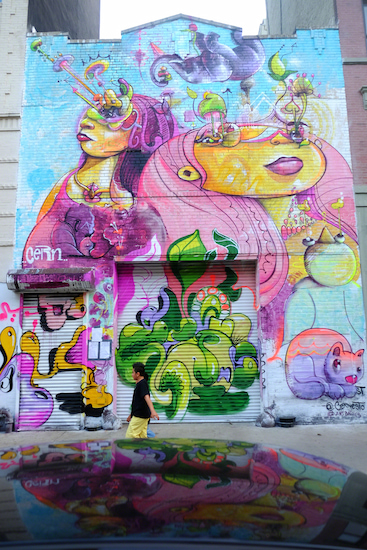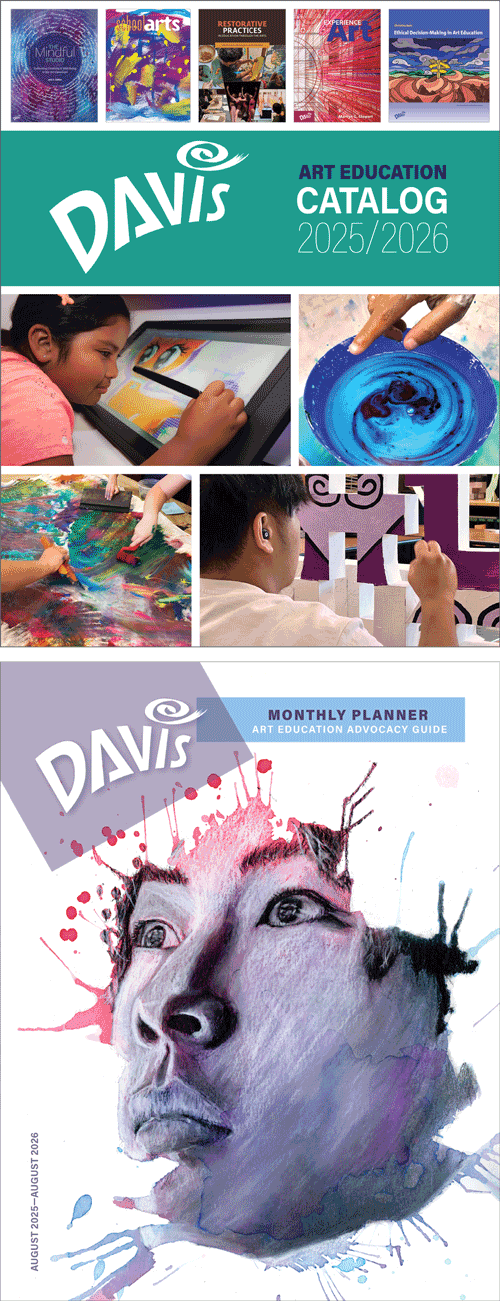National Pink Day: Art by CERN
Throughout the world, artists are making urban spaces, and just any drab blank building walls—interior and exterior—dynamic and full of positive energy with murals, i.e. street art. Street art/murals have been around since the ancient world, and the genre received fresh impetus during the 1980s with the growing number of street artists in both Europe and America. James P. Quinn is a contemporary street artist, many of whose works are a combination of his interest in nature and fantasy. Pink is an important part of CERN's palette.
National Pink Day on 23 June: Art by James P. Quinn (CERN, born 1978, United States)
James P. Quinn (street name CERN) is part of the flourishing street art art form that has developed since the early 2000s.
 |
| James P. Quinn (CERN), Remembrance of Nature, New York City, 2015. Mixed-media on brick and metal, 6.1 x 9.1 meters. Image © 2025 CERN. (8S-30399) |
This Surrealistic mural Remembrance of Nature was created in New York. It showcases CERN’s love for whimsical gestural characters depicted alongside natural elements. Elephants, mushrooms, flowers, birds, and cats are just some of the subjects that can be found on this large scale mural. CERN’s colors, shapes and lines create unity and rhythm in this imaginative figurative mural. Unity is achieved largely by the various pink tints, deliciously mixed with violets. Remembrance of Nature is yet another example of CERN’s love for nature and animals.
The art form of graffiti has been around since the ancient world. It has been found in ancient Roman cities such as Pompeii, and has been discovered in ancient Mayan religious sites. In both cultures it was illegal to deface public buildings, but, the art form was also an important means of communication.
Contemporary graffiti evolved in American urban areas starting in the 1960s. It spans all racial and economic groups. Its appearance on public buildings, housing and public transportation in American cities has spread as a cultural phenomenon around the world since the "renaissance" in graffiti art in the 1980s. The majority of these artists were self-taught. The first ever gallery exhibition of Street artists occurred in 1973 at Razor Gallery in New York City. In 1983, the Sidney Janis Gallery in New York brought graffiti art to the commercial art world in the US with the landmark exhibition Post-Graffiti.
CERN, a native of Queens, NY, got his start writing graffiti in the early nineties. Born in New York City, James was raised in Little Neck, Queens. Always drawing and playing instruments as a child, James began writing graffiti and making hip hop music with a passion by the time he entered high school. These interests were a big distraction academically but created a huge interest in the arts.
By the time of entering college, James was fully immersed in drawing ,painting,music and poetry. As well as any opportunity to experience nature. During college James began painting mural commissions and djing, pursuing a career as a freelance artist.
CERN is the type of artist whose life and craft are intensely intertwined. The wall or canvas act as an expression of a much deeper, layered mantra and perspective on how to navigate life. There is something carefree, lucid and free flowing about his work, which easily echoes the artist himself. His art comprises of abstract, free-flowing lines with figurative elements of nature and fantasy. Comparisons to his life philosophies are self evident; thoughtful, determined and somewhat clear but still open to evolution. CERN favors imagery of women, animals and abstract free-form shapes but is not confined to only these elements. His work is recognizable and shows skilled flow and intuitive spontaneity. CERN shares his new perspectives in murals by observing his surroundings and pulling from those experiences in real time.

Comments